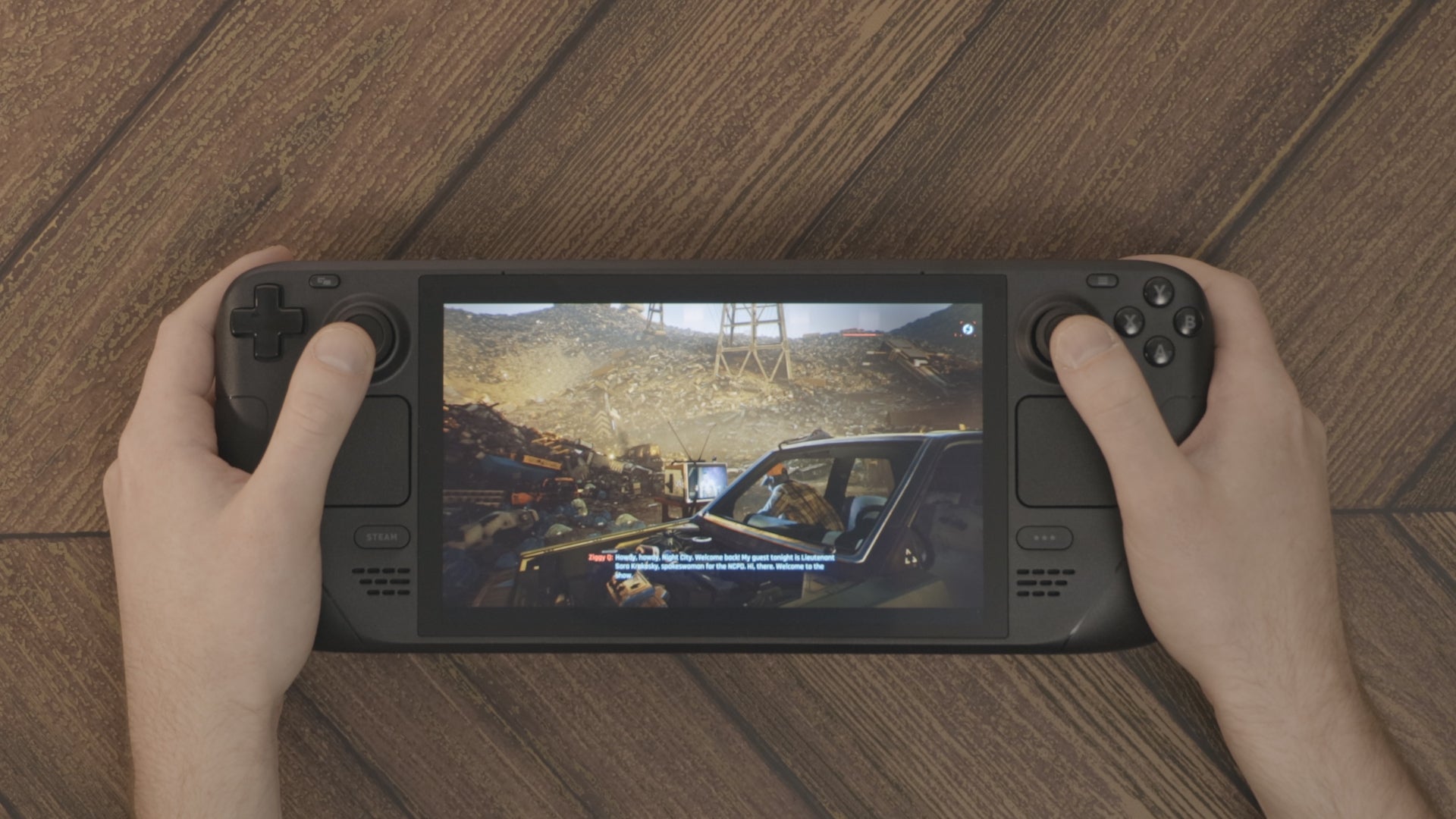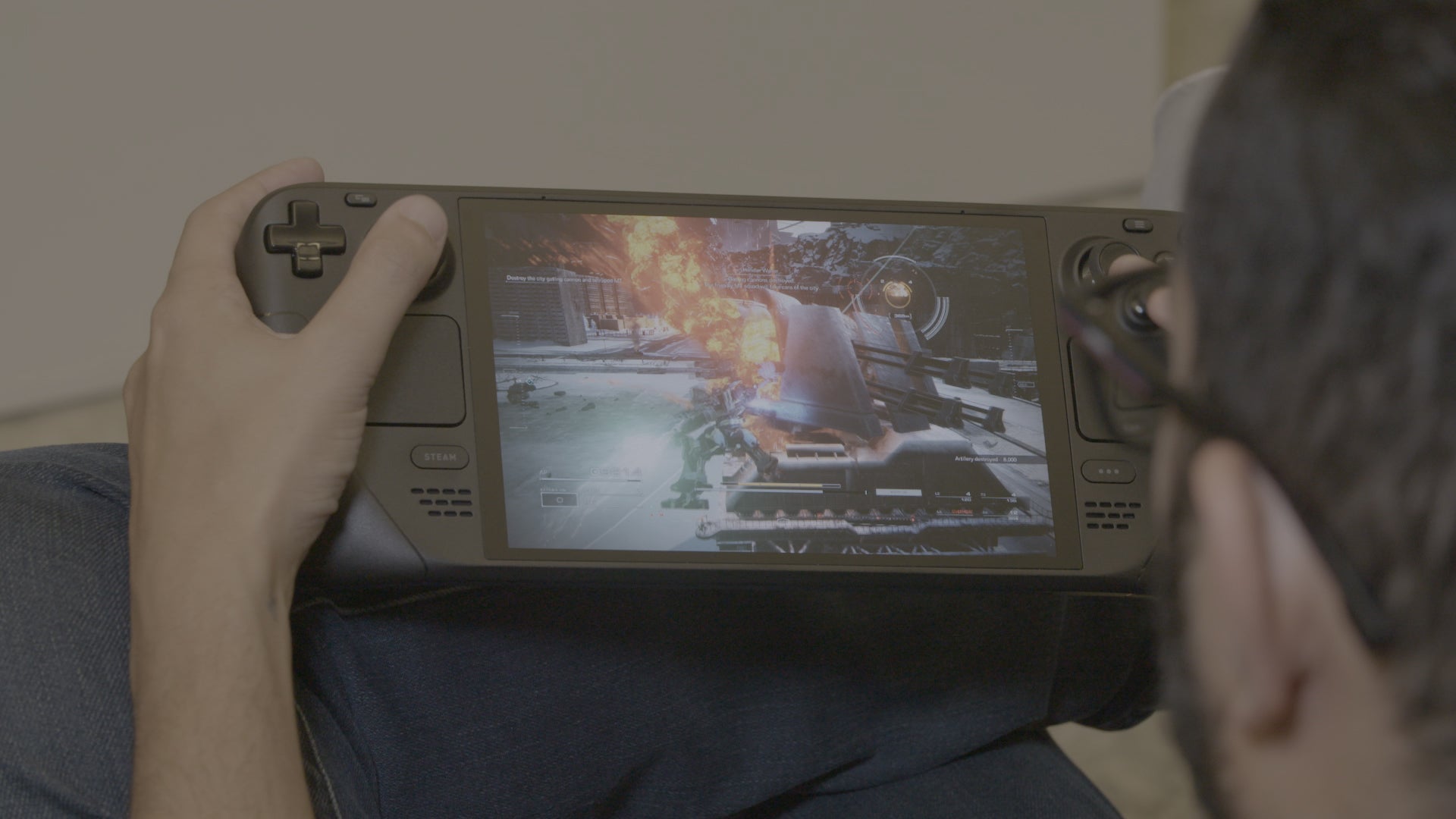The best way to describe Valve’s new Steam Deck OLED is that it’s the Steam Deck you’ve always wanted. It’s got a better display, a better battery, and, hell, a better everything. After spending some time with a new, updated handheld gaming console, I found it hard to go back to gaming on the smaller, dimmer screen of the original Steam Deck, which Valve is now referring to as the Steam Deck LCD.
This latest iteration introduces a ton of quality-of-life improvements, effectively addressing nearly all the criticisms I had of the original Steam Deck. The most notable upgrades include a vibrant HDR OLED display, extended battery life, and a lighter design.

-
What is it?
A new and improved Steam Deck with HDR OLED display and better battery life.
-
Price
$549 for 512GB SSD, $649 for 1TB SSD, $679 for 1TB SSD Special Edition with translucent chassis
-
Pros
Vivid HDR OLED Display, longer battery life, better thermals, versatile carrying case, brand-new thumbsticks, even more repairable
-
Cons
Gaming performance is the same as previous Steam Deck, form factor is still the same
Steam Deck OLED Design
Don’t call it a Steam Deck 2
Interestingly, the Steam Deck OLED appears almost identical to the original LCD model released last year. Valve decided to stick with the same form factor; aside from the orange power button, new all-black textured thumbsticks, and a slightly larger screen, a lot has stayed the same.
Thanks to the thinner profile of an OLED panel compared to an LCD, Valve managed to fit a larger 50Whr battery into the new model, upgrading from the previous 40Whr, while also reducing the weight by nearly 30 grams to approximately 640 grams. A 30-gram difference might not seem substantial, but considering how heavy the Steam Deck LCD was, you could feel the difference after using it for a while.

During my visit to Seattle for a first look at the OLED, Valve was adamant that this not be called the “Steam Deck 2.” Valve’s Lawrence Yang, who worked on the new Deck, considers it the “definitive first-generation Steam Deck.” If Valve were to release the Steam Deck all over again, this version would be it.
Oh, and I can’t forget to mention the new carrying case that now has a removable velcro inner liner that acts as a smaller carry case, so it fits better in a bag when you travel, taking up much less space. As a frequent flyer who takes the Steam Deck on planes, the inconvenience of the case occupying half the space in a backpack was really a pain.
Steam Deck OLED Display
It is one of the best handheld displays around.
The HDR OLED touch display is no joke. Picture quality but is also noticeably brighter, boasting a peak brightness of 1000 nits. Moreover, the OLED panel benefits from a higher refresh rate of 90Hz, up from the previous 60Hz. The reduced bezel size means you get more screen area without increasing the overall size of the Deck.
While playing Cult of the Lamb, the colors really pop in a way that the Steam Deck LCD can’t match. Blacks appear deep and rich, which is characteristic of OLED technology—this is due to the pixels being turned off to achieve true black. When you compare the same game on the OLED and LCD versions of the Steam Deck, the difference is stark, like night and day. It’s also pretty wild to have HDR support on a handheld gaming console.

I’ve spent quite some time playing Cyberpunk 2077 with HDR enabled, which looks fantastic. Valve has indicated that games with native HDR support will run on the Steam Deck OLED seamlessly, requiring no additional effort from developers.
The brighter screen makes outdoor play more viable. I’ve enjoyed a few rounds of Mercenaries mode in Resident Evil 4 while out on the patio on a warm November afternoon with the sun shining, without squinting at all in that notoriously dark game.
Steam Deck OLED Performance
Games run the same, but it is a cooler, more quiet experience.
There isn’t much to say about the Steam Deck OLED’s performance. Despite numerous internal upgrades to the AMD APU that impact thermals and battery life, games should run comparably to how they do on the Steam Deck LCD. A notable improvement is that the new Steam Deck doesn’t overheat as much when handling demanding games.
Launching games and navigating through SteamOS is quicker, offering a more responsive user experience. The trackpad has been refined and now offers less finicky movements. Additionally, there’s an upgraded Bluetooth module with a dedicated antenna, which significantly enhances connectivity with Bluetooth devices like a headset—a welcome fix to an issue prevalent with the original Steam Deck LCD (or at least mine).

While there’s a long list of minor enhancements in the Steam Deck OLED that I won’t detail here, it’s clear that Valve meticulously addressed every element of the Deck, enhancing everything from the speakers’ volume to the feel of the joysticks.
Steam Deck Battery
The Steam Deck is finally as portable as it was meant to be.
The most significant upgrade, next to the striking OLED display, is the battery life. Valve claims that, depending on the game, users may see a 30 to 50% improvement in battery longevity. Our tests suggest a more modest increase of about 25 to 40%; however, we conducted these tests with games running at full brightness, which aligns more closely with typical usage or at least how I like to use it.
Cyberpunk 2077, the most resource-intensive game I tested on the Steam Deck OLED, got approximately 2 hours of playtime over several sessions. This marks an average improvement of 30-45 minutes over the Steam Deck LCD.

The indie hack and slasher Hades lasted around 6 hours, about 90 minutes longer than on the LCD version. The mecha action game Armored Core V: Fires of Rubicon” managed about two and a half hours of playtime, about 35 minutes better than the original hardware.
What I appreciate most about the enhanced battery life is the ability to enjoy multiple gaming sessions with your favorite cozy like Stardew Valley (which lasted about six and a half hours with a 23% charge remaining) without the constant need to reach for the power cable.
Should I Buy a Steam Deck OLED?
Now’s the best time to buy a Steam Deck.
While I am quite fond of the Steam Deck OLED, part of me still yearns for a more streamlined or mini version of the handheld. It’s great that it’s lighter, but for those who found the original model bulky and heavy. You’ll have the same complaints.
For current Steam Deck owners, the idea of shelling out another $549+ for a new model just over a year after the original’s release—despite the significant improvements—might be a tough pill to swallow. As I mentioned earlier, when you see the new OLED display do its thing, it does not want to make the upgrade.
The Steam Deck OLED is the best handheld gaming device next to the Nintendo Switch OLED. The display is stunning, making games look better than ever, and the extended battery life truly allows for more time spent actually enjoying those games.
It may not be the Steam Deck 2 many hoped for, but it’s an impressive Steam Deck 1.5.














